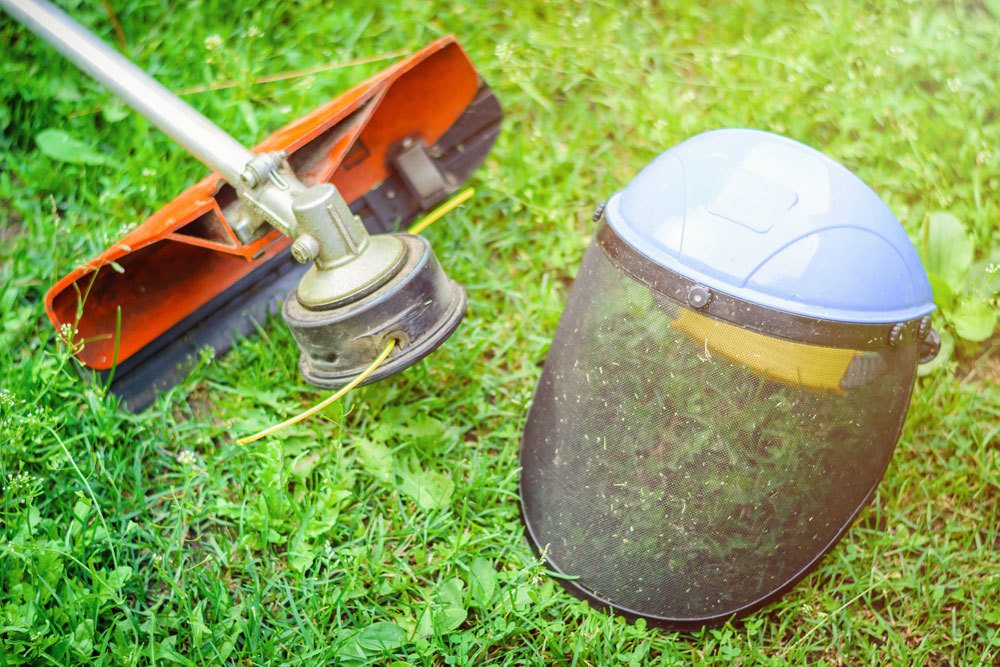You want to trim your lawn, but the thread keeps breaking? That’s a problem you’re not alone with! After all, porous strings are a regular challenge for almost all gardeners. But don’t worry: there are a few tricks you can use to save yourself a lot of trouble and money. And so that you know what it’s all about, I’ve put together 5 little tips for you that can give your threads a longer life.

This way, the thread is less likely to break:
- Be careful not to wind the thread too tightly or too loosely.
- After a longer break from trimming or before using the thread for the first time, place it in a water bath for about a day to moisten it thoroughly.
- Angular filaments usually last longer than more rounded models
- Regularly inspecting and cleaning the string spool will keep debris out of the string
- Clearing your lawn edge of obstacles before you start work means less stress on the string
Contents
1 very important: Proper winding.
Many gardeners underestimate the importance of winding the thread. The consequences are often frustrating: If the thread is wound too tightly, it quickly gets stuck in the bobbin and inevitably breaks. But the other extreme is not good either: If the thread is too loose, the bobbin tries to overcompensate for this, so that it then tightens excessively and then tears again.
I therefore advise you to find a middle way: Allow the coil a little room to unfurl without letting it sit too loosely. This way you can significantly extend the life of your bobbin.
2 for better stability: moisten the thread beforehand.
You haven’t used a trimmer for a long time? Then it is possible that your thread has dried out and therefore breaks more easily. This phenomenon is also often found with newly purchased and/or long-stored spare spools. In all these cases, if you prepare the thread beforehand, it will often last much longer!
This means that you should remove the thread from the bobbin before use and then give it a water bath for at least 24 hours. A damp sponge can also do a good job here. Thus strengthened, the thread is not so quickly porous and lasts accordingly longer.
3 Don’t save on the wrong end when buying thread
And while we are on the subject of replacement threads: Here you should also invest in quality. Because a cheap thread that is not suitable for your trimmer tends to break much faster. Firstly, it is therefore advisable to pay attention to the specifications in the operating manual of your trimmer when buying thread.
In addition, the more angular a filament, the more stable it will be. So be sure to select a multi-edged replacement model. Such reinforced filaments are usually a bit more expensive to purchase, but they often last much longer.
4 Care and maintenance of the thread spool
But the thread spool itself can also become a problem for the thread. If, during trimming, garden debris such as stones, small twigs or fallen fruit find their way into the spool, the space for the thread becomes tight: the mechanism then no longer works properly, the thread is overstressed and then quickly breaks.
To avoid this, you should invest a few minutes after each use and briefly open the thread spool. If you then notice that residues have found their way inside, you should carefully remove them. Cleaned in this way, the filament will have less stress during the next trimming cycle, so it will last longer.
5 remove obstacles before trimming
Before trimming, you should also be careful. Because the obstacles that can interfere with the coil are also a threat to your threads on the lawn. Then, if your trimmer comes into contact with a few sharp little stones, they can quickly cut the thread, for example.
Solving this problem is a bit time-consuming, but it avoids many problems with the filaments: if you make a check before trimming and rake away obstacles such as stones, twigs and fallen fruit, you have already eliminated many sources of danger for your filament trimmer.
Conclusion
If you keep having problems with what you think is a porous string, you’re not alone. Almost every gardener who uses a lawn trimmer has had to deal with this at some point.
Fortunately, there are ways to prevent the constant breakage: if you follow my 5 tips, chances are good that your trimmer string will last a lot longer, so you can save yourself some stress.

